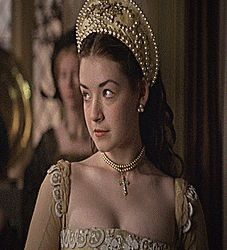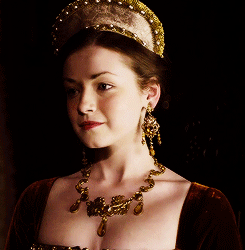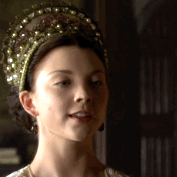A blog dedicated to all the formidable women who reigned during the Tudor Era
Don't wanna be here? Send us removal request.
Text
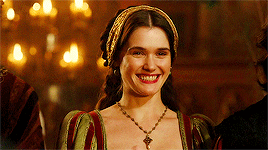



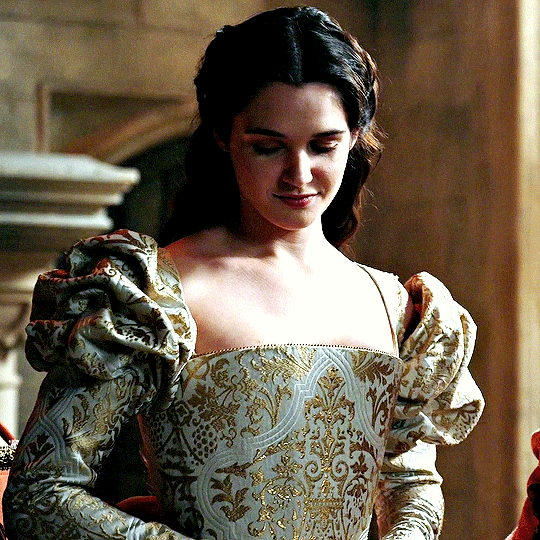
From Princess, to Queen, to Duchess
Mary Tudor (March, c. 1496; London, England - June, 1533; Suffolk, England) was an English princess, the third wife of King Louis XII of France and one of the two sisters of King Henry VIII. Mary was also the grandmother of Lady Jane Grey, who would become titular queen of England for nine days in 1553.
Mary’s father, King Henry VII, betrothed her to Archduke Charles —later Holy Roman Emperor, Charles V — in 1507. In 1514, however, political tribulations caused King Henry VIII to renounce such engagement and arrange a match between his beautiful, charming and yound sister and Louis XII, the sick and french monarch of 52. Since Mary was already in love with Charles Brandon, the first Duke of Suffolk, she made Henry promise that after Louis died she would be allowed to choose her next husband.
The marriage with the french king took place on Octouber of 1514, and Mary performed her role as wife and royal consort with kindness and dedication until he died on January of the following year. Before Henry or the new King of France, Francis I, could use her as a pawn in another political arrangement, Mary secretly wed Suffolk in Paris, probably in late February. Henry VIII was infuriated at the news, but eventually the pair regained the king’s favour, with Suffolk paying him a large sum of money and perhaps with the help and intercession of Cardinal Wolsey.Mary and Charles had four children, two daughters and two sons: ⇒ Henry Brandon (11 March 1516 – 1522); ⇒ Lady Frances Brandon (16 July 1517 – 20 November 1559), married to Henry Grey, 3rd Marquess of Dorset, and mother to Lady Jane Grey; ⇒ Lady Eleanor Brandon (1519 – 27 September 1547), married to Henry Clifford, 2nd Earl of Cumberland; ⇒ Henry Brandon, 1st Earl of Lincoln (c. 1523 – March 1534).
Mary had enjoyed unprecedented freedom during her teenage years at her brother's court. Just fourteen when her father, Henry VII died, she spent the next five years almost completely unchaperoned, encouraged to participate in every event, celebration and feast, each planned to display the opulence of the english royal family. She shared Henry's exuberance for spectacle and, for some time, was one of the central ladies of the court, admired and sociable. Like him, she loved dancing, masques, and parties; they were also very close, with the princess being the apple of the king's eye. It's rumored that Henry's famous warship, the Mary Rose, was named after both his favorite sister and his only daughter with Catherine of Aragon.
Upon her arrival in France, Mary was proclamed, by the Venetian Ambassador, to be "handsome and well favoured, grey-eyed; slight, rather than defective from corpulence, and conducts herself with so much grace, and has such good manners, that for her age of 18 years—and she does not look more—she is a paradise." She was particularly admired by her contemporaries for her long red hair, which she had inherited from the Plantagenet lineage through her mother, Elizabeth of York, who had also been an celebrated beauty.
After her second marriage, the Duchess of Suffolk lived a quiet life in the country, retired from court, although she had been know to have attended the famous Field of the Cloth of Gold at Guines, near Calais, in 1520. Often referred to as the French Queen, she was known to dislike Anne Boleyn and in defiance of her brother was to prove a firm supporter of her sister-in-law, Catherine of Aragon, in the matter of Henry VIII's annulment of his marriage to his first wife.
Mary visited London for the last time to celebrate the wedding of her eldest daughter, Lady Frances Brandon, to Henry Grey, Marquess of Dorset, in 1533. After suffering failing health for some years, Mary Tudor died on 25 June 1533 at the age of thirty-eight at Westhorpe Hall, Westhorpe, Suffolk, possibly of cancer. Henry VIII had requiem masses sung at Westminster Abbey for the repose of her soul and she was given a magnificent funeral, which her husband did not attend. Her body was interred at the Abbey of Bury St Edmunds. The Duke of Suffolk quickly remarried again, in that same year, to his fourteen-year-old ward, Katherine Willoughby (1519–1580), suo jure Baroness Willoughby de Eresby. Katherine had been betrothed to his eldest surviving son, Henry, Earl of Lincoln, but the boy was too young to marry, and Charles, to eager to add the heiress fourtune to his own.
#tudor dynasty#tudor queens#tudor history#tudor era#tudorqueens#the tudors#mary tudor#henry viii#elizabeth of york#charles brandon#tudor england#tudor period#tudor women#english royalty#house of tudor#medieval england#english history
54 notes
·
View notes
Text





La Peregrina, A Queen Among Jewels Pear-shaped and weighing in at a magnificent 223.8 grains of 55.95 carats, Phillip II of Spain's wedding gift surpassed every fantasy his bride, the newly crowned Mary I of England, could have imagined. Baptized La Peregrina (an expression from the groom's native language meaning "female wanderer"), the brilliant pearl was delivered directly to the queen, its priceless value reflecting the inestimable importance that a marriage treaty between England and Spain represented at the time. Found on the coast of Panama in 1513 by an African slave, the pearl went down in history as a fine adornment much appreciated by royalty. In her well-known official portrait of 1554, Mary is depicted adorned with her wedding present, dangling from a bejeweled brooch on her chest. Queen Margaret, wife of Phillip III of Spain, wore it during celebrations of a peace treaty with the English in 1605. Two of the wives of Phillip IV of Portugal and Spain also had the privilege of wearing it — but the jewel would still pilgrimage through Europe and the world, and would end up not just under the possession of princesses and queens, but of other distinguished personalities. After the end of the 16th and 17th centuries, La Peregrina would be mentioned in the annals of history again only in 1813, when Joseph, brother of Napoleon Bonaparte, filched it along with a significant part of the Spanish Crown Jewels, in his flight from Spain back to France. After the fall of Napoleon in 1815, the pearl's new owner moved to the United States, where he would eventually die and leave it to his nephew, Charles Louis, the future Napoleon III. During his own exile, this time in England, the descendant of the Emperor of the French sold it to the second Duke of Abercorn, and it was actually during this period that the family heirloom received its infamous name. The pearl would remain in the Abercorn family for a century, being briefly lost by falling from its setting twice — first, disappearing between the cushions of a sofa in Windsor Castle; then, during a ball at Buckingham Palace. Fortunately, La Peregrina was found and returned to her owners in both occasions. In 1913 the jewel was cleaned and polished, and as a result, lost approximately 203 grams. Yet it still remains today the largest symmetrical pearl of its shape, and in 1969, after being auctioned at Sotheby's, it once again became a husband's gift to his wife. Richard Burton bought it for $37,000 for his wife, the iconic actress Elizabeth Taylor. Interestingly enough, Taylor decided to adorn her gift with a completely new design, one inspired by none other than the regal portrait of Mary I. Other smaller pearls, emeralds and rubies completed the piece, centering around the glorious Peregrina, now displayed as a Tudor styled choker.
#tudor history#tudor queens#tudor dynasty#history#culture#tudor era#mary i of england#mary tudor#elizabeth taylor#tudorqueens#history facts#queen mary i
67 notes
·
View notes
Photo



“Maria de Salinas was lady-in-waiting to Katherine of Aragon, and one of her closest confidantes. Although we know little of her origins, she was the daughter of Juan de Salinas, secretary to Katherine’s eldest sister, Isabella, and Josepha Gonzales de Salas. Despite the fact that she was not on the original list of ladies, drawn up in 1500, chosen to accompany Katherine of Aragon to England for her marriage to Prince Arthur, it seems likely that she, and her sister Inez, did come to England with the Spanish princess. She may have been added to the princess’s staff when her mother, Isabella of Castile, increased the size of Katherine’s entourage in March 1501.
Maria was one of the ladies who stayed with Katherine after her household was reduced and many returned to Spain, following the death of Katherine’s young husband, Arthur, Prince of Wales, in 1502. She stayed with the Spanish princess throughout the years of penury and uncertainty, when Katherine was used as a pawn by both her father, Ferdinand, and father-in-law, Henry VII, in negotiations for her marriage to Prince Henry, the future Henry VIII; a marriage which was one of Henry’s first acts on his accession to the throne. Maria is included in the list of Katherine’s attendants who were given an allowance of black cloth for mantles and kerchiefs, following the death of Henry VII in 1509; she was then given a new gown for Katherine’s coronation, which was held jointly with King Henry in June of the same year.
In 1511 Maria stood as godmother to Mary Brandon, daughter of Charles Brandon – one of the new king, Henry VIII’s closest companions and her future son-in-law – and his first wife, Ann Browne. Katherine of Aragon and Maria were very close; in fact, by 1514 Ambassador Caroz de Villagarut, appointed by Katherine’s father, Ferdinand of Aragon, was complaining of Maria’s influence over the queen. He accused Maria of conspiring with her kinsman, Juan Adursa – a merchant in Flanders with hopes of becoming treasurer to Philip, prince of Castile – to persuade Katherine not to cooperate with the ambassador. The ambassador complained: ‘The few Spaniards who are still in her household prefer to be friends of the English, and neglect their duties as subjects of the King of Spain. The worst influence on the queen is exercised by Dona Maria de Salinas, whom she loves more than any other mortal.’¹
Maria was naturalised on 29th May, 1516, and just a week later, on 5th June she married the largest landowner in Lincolnshire, William Willoughby, 11th Baron Willoughby de Eresby. William Willoughby was the son of Sir Christopher Willoughby, who had died c.1498, and Margaret, or Marjery, Jenney of Knodishall in Suffolk. He had been married previously, to Mary Hussey, daughter of Sir William Hussey, Chief Justice of the King’s Bench. The King and Queen paid for the wedding, which took place at Greenwich, the Queen even provided Maria with a dowry of 1100 marks. They were given Grimsthorpe Castle, and other Lincolnshire manors which had formerly belonged to Francis Lovel (friend of Richard III), as a wedding gift. Henry VIII even named one of his new ships the Mary Willoughby in Maria’s honour.
Maria remained at court for some years after her wedding, and attended Katherine at the Field of Cloth of Gold in 1520. Henry VIII was godfather to Maria and William’s oldest son, Henry, who died in infancy. Another son, Francis, also died young and their daughter Katherine, born in 1519, would be the only surviving child of the marriage. Lord Willoughby died in 1526, and for several years afterwards Maria was embroiled in a legal dispute with her brother-in-law, Sir Christopher Willoughby, over the inheritance of the Willoughby lands. Sir Christopher claimed that William had settled some lands on Maria which were entailed to Sir Christopher. The dispute went to the Star Chamber and caused Sir Thomas More, the king’s chancellor and a prominent lawyer, to make an initial redistribution of some of the disputed lands.
This must have been a hard fight for the newly widowed Maria, and the dispute threatened the stability of Lincolnshire itself, given the extensive lands involved. However, Maria attracted a powerful ally in Charles Brandon, Duke of Suffolk and brother-in-law of the King, who called on the assistance of Cardinal Thomas Wolsey, Henry’s first minister at the time, in the hope of resolving the situation. Suffolk had managed to obtain the wardship of Katherine Willoughby in 1528, intending her to marry his eldest son and heir Henry, Earl of Lincoln, and so had a vested interest in a favourable settlement for Maria. This interest became even greater following the death of Mary Tudor, Suffolk’s wife, in September 1533, when only three months later the fifty-year-old Duke of Suffolk married fourteen-year-old Katherine, himself.
Although Suffolk pursued the legal case with more vigour after the wedding, a final settlement was not reached until the reign of Elizabeth I. Suffolk eventually became the greatest landowner in Lincolnshire and, despite the age difference, the marriage does appear to have been successful. Katherine served at court, in the household of Henry VIII’s sixth and last queen, Katherine Parr. She was widowed in 1545 and lost her two sons – and heirs – by the Duke, Henry and Charles, to the sweating sickness, within hours of each other in 1551. Katherine was a stalwart of the Protestant learning and even invited Hugh Latimer to preach at Grimsthorpe Castle. It was she and Sir William Cecil who persuaded Katherine Parr to publish her book, The Lamentacion of a Sinner in 1547, demonstrating her continuing links with the court despite her first husband’s death. Following the death of her sons by Suffolk, Katherine no longer had a financial interest in the Suffolk estates, and in order to safeguard her Willoughby estates, Katherine married her gentleman usher, Richard Bertie.
The couple had a difficult time navigating the religious tensions of the age and even went into exile on the Continent during the reign of the Catholic Queen, Mary I, only returning on Elizabeth’s accession. Katherine resumed her position in Tudor society; her relations with the court, however, were strained by her tendency towards Puritan learning. The records of Katherine’s Lincolnshire household show that she employed Miles Coverdale – a prominent critic of the Elizabethan church – as tutor to her two children by Bertie, Susan and Peregrine. Unfortunately, Katherine died after a long illness, on 19th September 1580 and was buried in her native Lincolnshire, in Spilsby Church.
A widow since 1526, Maria de Salinas, Lady Willoughby, kept a tight rein on the Willoughby lands,proving to be an efficient landlady. Unfortunately, the fact she took advantage of the dissolution of the monasteries in order to lease monastic land; a business arrangement, rather than political or religious, but it still made her a target of discontent during the Lincolnshire Rising.
Maria had remained as a Lady-in-Waiting to Katherine. She was known to dislike Anne Boleyn and, as Henry’s attitude towards Katherine hardened during his attempts to divorce her, in 1532 Maria was ordered to leave Katehrine’s household and not contact her again. By 1534, as Emperor Charles V’s ambassador, Chapuys, described it; Katherine was ‘more a prisoner than before, for not only is she deprived of her goods, but even a Spanish lady who has remained with her all her life, and has served her at her own expense, is forbidden to see her.’²
When Katherine was reported to be dying at Kimbolton Castle, in December 1535, Maria applied for a license to visit her ailing mistress. She wrote to Sir Thomas Cromwell, the King’s chief minister at the time, saying ‘for I heard that my mistress is very sore sick again. I pray you remember me, for you promised to labour with the king to get me licence to go to her before God send for her, as there is no other likelihood.’² Permission was refused, but despite this setback, Maria set out from London to visit Katherine at Kimbolton Castle, arriving on the evening of New Years’ Day, 1536 and contrived to get herself admitted by Sir Edmund Bedingfield by claiming a fall from her horse meant she could travel no further. According to Sarah Morris and Nathalie Grueninger, Katherine and Maria spent hours talking in their native Castilian; the former queen died in Maria’s arms on 7th January 1536.³ Katherine of Aragon was buried in Peterborough Cathedral on 29th January, with Maria and her daughter, Katherine, in attendance.
Maria herself died in May 1539, keeping control of her estates to the very last. She signed a copy of the court roll around 7th May, but was dead by the 20th, when Suffolk was negotiating for livery of her lands. Her extensive Lincolnshire estates, including Grimsthorpe and Eresby, passed to her only surviving child, Katherine and her husband, Charles Brandon, Duke of Suffolk. Maria’s burial-place is unknown, though there is a legend that she was buried in Peterborough Cathedral, close to her beloved Queen Katherine.”
109 notes
·
View notes
Photo

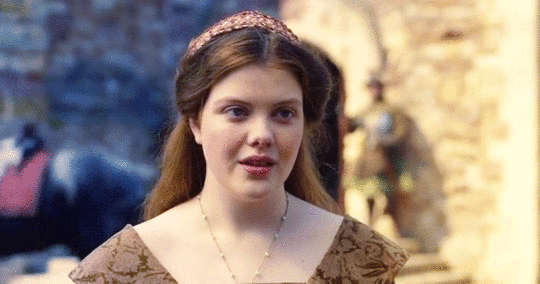


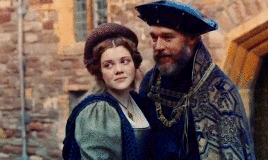
“Dashing, accomplished, highly intelligent and interested in everything, James IV of Scots enjoyed himself with mistresses while manoeuvring to secure a politically useful bride. He was thirty when a small, dumpy thirteen-year-old from England, daughter of Henry VII, reached Scotland for a wedding which a hundred years later would put a Scottish king on the English throne. That prospect had been foreseen in the long negotiations that preceded the signing of the marriage agreement in 1502. Henry VII reportedly told his advisers that a Scots king might one day inherit England, but England would be the gainer as the dominant partner in an enlarged realm: ‘the accession will be of Scotland to England, not of England to Scotland.’
Margaret’s train on the journey north by York, Durham, Newcastle and Berwick was headed by the Earl of Surrey, with his Countess as the princess’s chaperone. John Young, Somerset Herald, was sent along to make an official record. The ladies rode on palfreys or were drawn on litters, escorted by gentlemen, squires and pages, with trumpeters, drummers and minstrels. The party crossed the border into Scotland on August 1st, 1503, to be greeted by the Archbishop of Glasgow and a thousand Scottish lords and gentlemen ‘in rich jewels and massy chains’. At Dalkeith Castle on August 3rd, King James himself, in a crimson velvet jacket, rode in with a train of horsemen. Margaret curtsied deeply and he bowed low and they kissed in greeting. They talked together privately and sat together at supper and afterwards he played to her on the clavichord and the lute. Two nights later she played for him.
On Monday August 7th, they made a state entry into Edinburgh, both of them in cloth of gold trimmed with black velvet or black fur. To tremendous cheers and the clangour of bells they rode in on one horse, with Margaret riding pillion behind the King, escorted by two hundred knights and pausing to witness numerous pageants. The union of the thistle and the rose was celebrated next morning in the chapel of Holyrood-house. Margaret wore a gown trimmed in crimson and the Countess of Surrey bore her train, while James was magnificent in white damask with crimson satin sleeves. After the marriage ceremony conducted by the archbishops of Glasgow and York there was a nuptial mass and a short coronation ritual, with the King’s arm round his new queen’s waist much of the time. There followed a splendid feast of fifty or sixty dishes including roast crane and roast swan, and then dancing and supper until finally at last ‘the King had the Queen apart and they went together’. Edinburgh blazed with bonfires that night.
It looks as if James may quietly have delayed the consummation in consideration of his wife’s age, but there were days of festivities at great expense, though the English guests took care not to be impressed. The new queen wrote a homesick note to her father (‘I would I were with your Grace now and many times more’) before her husband took her on a tour of his realm. At Stirling Castle she was taken aback to find a whole nursery of royal bastards being brought up together, James being an affectionate father. The strait-laced Margaret never accustomed herself to the free ways of the Scots court and the boldness of the women. She bore James six children, but only one survived, the future James V, who was seventeen months old in 1513 when his father was killed at Flodden, fighting an English army commanded by the same Earl of Surrey. Margaret was then twenty-three. The rest of her life was spent in intrigues and power struggles, with two more marriages before she died aged fifty-two in 1541. It was her great-grandson, James VI, who succeeded to the English throne in 1603.”
81 notes
·
View notes
Photo



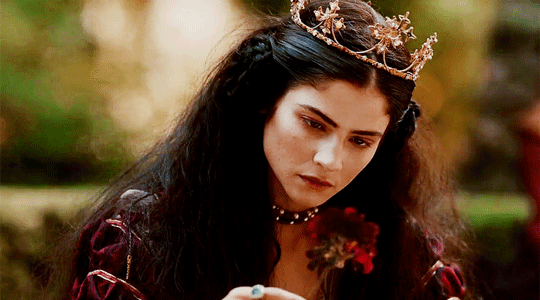

“Juana of Castile, known as Juana la Loca or Joanna the Mad, was the elder sister of Catherine of Aragon and sister-in-law to Henry VIII of England. Juana married Philip the Handsome in 1496, when she was 16. She went on to have six children with her husband, including Charles, who later became the Holy Roman Emperor. Juana was an intelligent young woman and, like her sisters, received a considerable education for the time-period. It was reported that Juana could speak the three main languages of the Iberian Peninsula, along with Latin and French.
Juana was never expected to be Princess of Asturias (the title of the heir apparent to the throne of Aragon), let alone Queen of Spain. Juana had two older siblings, her sister, Isabella, and a brother, Juan. Juan sadly died in 1497 at the age of 19 and his wife, Margaret of Austria, gave birth to a stillborn daughter two months after his death. Juana's sister, Isabella died in 1498, shortly after giving birth to her son Miguel. Miguel died in 1500 before his second birthday. This succession of deaths quickly catapulted Juana to her new position of Princess of Asturias, the title given to the heir to the throne of Castile. Juana's mother, the formidable Catholic monarch, Isabella I of Castile, passed away in 1504. This left the throne of Castile and Leon to Juana. She inherited the Kingdom of Aragon from her father upon his death in 1517.
Juana had started exhibiting signs of mental instability in 1504, when her mother was stricken with a fever. As was seen at other times during her lifetime, Juana was not eating or sleeping when her mother fell ill. After visiting with her mother, Juana wished to join her husband in Flanders, which would mean she would have to travel through France at a time when France and Castile were at war. When she was prevented from leaving for Flanders, twenty-four-year-old Juana flew into a rage.
Perhaps one of Juana’s most notorious, lurid displays of mental instability occurred when her husband died in September of 1506. Already known to fly into jealous rages over her husband's mistresses, even reportedly going so far as to attack at least one, Juana refused to part with her deceased husband's remains for a disturbingly long time. Quite pregnant, Juana travelled with her husband's body from Burgos to Granada, where he was to be buried. This is a distance of 668 kilometres, which would take around 6 1/2 hours to drive in a car today, so an extraordinary distance to cover in those days. Juana was said to have opened her husband's casket to embrace him and kiss him.
Unfortunately, Juana's husband Philip had spread rumours about her madness when he was still alive and her behaviour after his death may have reinforced these rumours. Juana's son, Charles, who became the Holy Roman Emperor Charles V, eventually took over from Juana as regent, and then, monarch. In 1509 Juana was either placed in, or retired to, the Royal Monastery/Convent of Santa Clara in Tordesillas, Castile. Charles forbade Juana any visitors. She died there on 12th April 1555, Good Friday, at the age of 75. Juana was laid to rest in Granada's La Capilla Real, the resting place of her husband and parents.
So, was Juana mad? Was she undermined by her husband or son?
Juana's maternal grandmother, Isabella of Portugal, supposedly also suffered from mental illness and was sent to a convent. Juana's grandson Carlos and great-granddaughter Maria of Austria, Duchess of Jülich-Cleves-Berg, reportedly also went mad. It is thought that Juana may have suffered from a wide range of mental illness, including schizophrenia and depression. However, it does seem that her behaviour escalated in response to the deaths of her siblings, her nephew, her mother and her husband. Both Philip the Handsome and Charles V had a lot to gain from Juana being declared unfit to rule. She was also sent, or perhaps banished, to a convent by her son and not allowed any visitors for the rest of her life. So was Juana mad, or was she the victim of ruthless individuals in her life? What do you think?”
#juanna of castile#juanna la loca#queen of spain#Tudor Dynasty#tudor queens#Tudor History#tudor women
85 notes
·
View notes
Photo
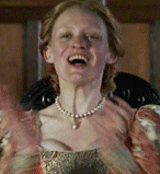
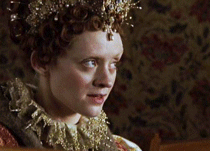

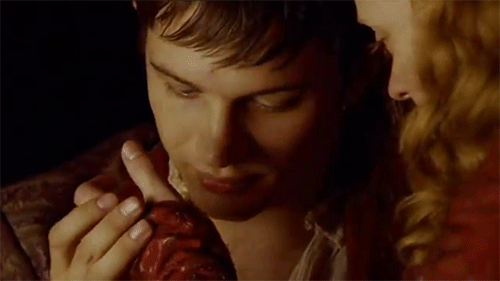
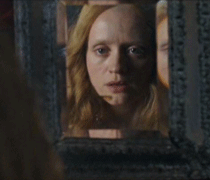
“I know I have but the body of a weak and feeble woman, but I have the heart and stomach of a king, and of a king of England too.” ― Queen Elizabeth I
#queen elizabeth i of england#The Tudor Dynasty#the virgin queen#Elizabeth I of England#tudor queens#Tudor History
52 notes
·
View notes
Photo

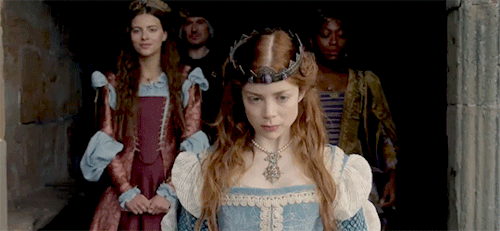

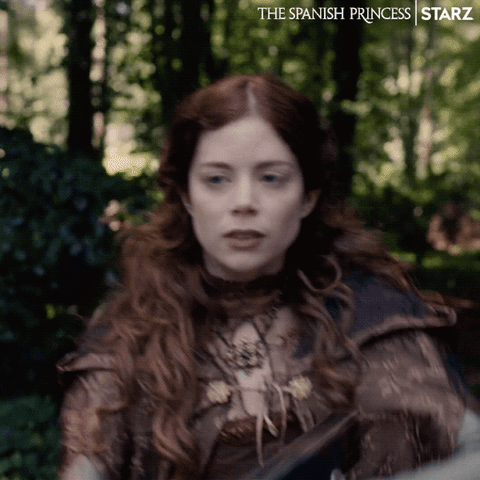

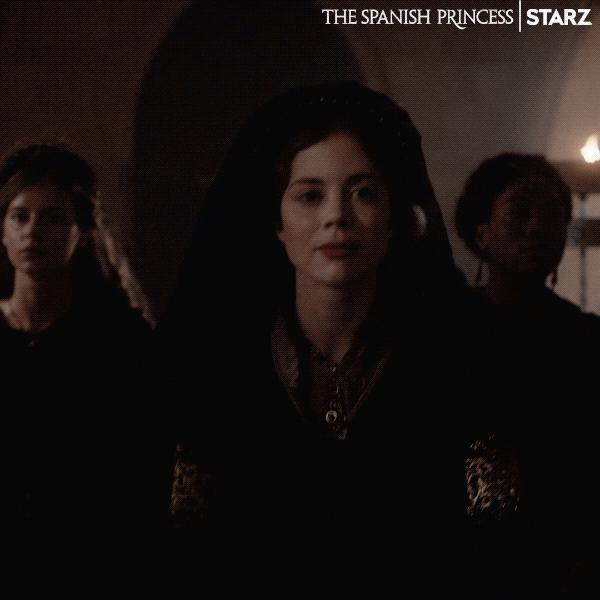
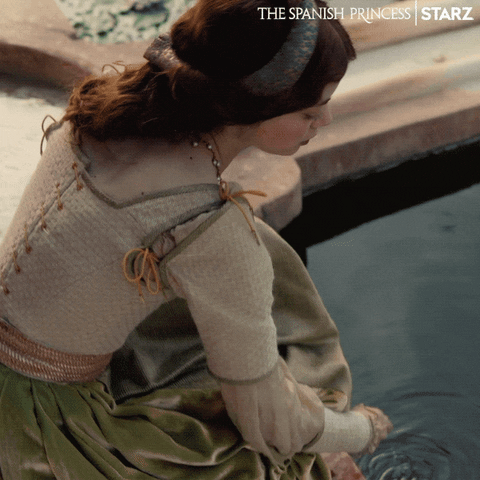
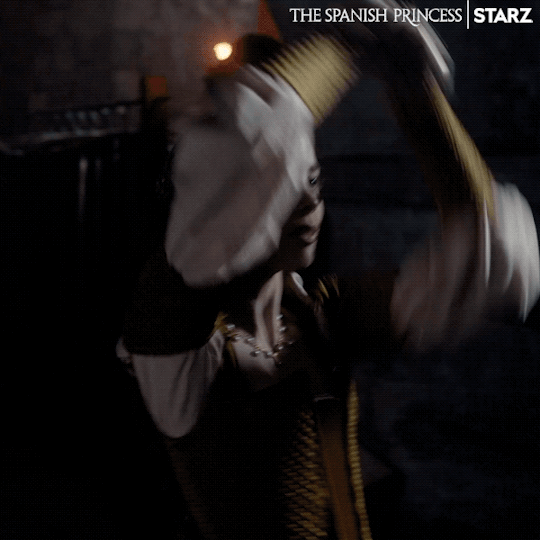
In 1501, it was Katharine’s turn to travel to a foreign land, to an unknown husband. On arriving in London, she processed riding a richly-harnessed mule, to St Paul’s Cathedral for her wedding. Her dress and appearance are not described in detail, other than to note that she wore a hat like a cardinal’s (that is, broad-brimmed, with a low crown), and that beneath this, her hair flowed over her shoulders. Sir Thomas More (who was present) was later to say that few women could compare for looks with Katharine in her youth. Catherine may have been the daughter of the Catholic Reyes of Spain but she had long, auburn or strawberry blonde hair, fair skin and blue eyes, as can be seen in the portraits of the younger Catherine, rather than the typical dark looks and olive skins of Spaniards. These looks were inherited from her English Royal ancestors, women like her great-grandmother and name-sake, Catherine of Lancaster, and her great-great-grandmother, Philippa of Lancaster. Catherine was educated by a tutor, Alessandro Geraldini, who was a clerk in Holy Orders. She studied arithmetic, canon and civil law, classical literature, genealogy and heraldry, history, philosophy, religion, and theology. She had a strong religious upbringing and developed her Roman Catholic faith that would play a major role in later life. She learned to speak, read and write in Spanish and Latin, and spoke French and Greek. She was also taught domestic skills, such as cooking, dancing, drawing, embroidery, good manners, lace-making, music, needlepoint, sewing, spinning, and weaving. Scholar Erasmus later said that Catherine "loved good literature which she had studied with success since childhood".
131 notes
·
View notes
Photo

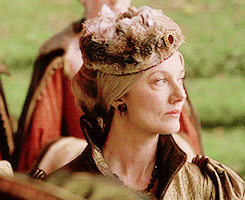
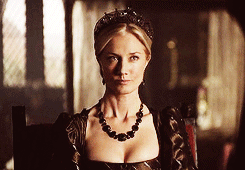
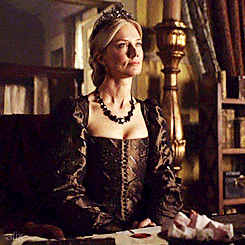

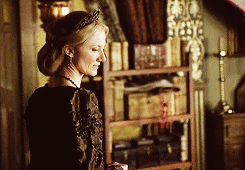

Catherine was an attractive and intelligent woman, who combined the intelligence and wit of Anne Boleyn with the prudence and diplomacy of Catherine of Aragon. She was what Henry needed after the heartbreak of the Catherine Howard marriage. Catherine is known for reuniting Henry’s children with their father and bringing them back to court. Mary was won over by the fact that Catherine’s mother had been a good friend to her own mother, Catherine of Aragon, Edward was young enough not to remember his own mother and to see Catherine as his mother, and even the precocious Elizabeth was won over by Catherine’s warmth and intelligence, and this relationship would be a deep one which lasted until Catherine’s death. This reunification of the family was not just good for the children, it also presented a united front against Henry’s opponents. The belief that Catherine Parr was a glorified nursemaid to the ageing and ill King is a myth. Catherine was an intelligent woman who was an accomplished author (“Prayers Stirring the Mind unto Heavenly Meditations” published in 1545) and Henry even trusted her to act as Regent while he was in France in 1544. She was also a patron of the arts.Her achievements as Queen included bringing the royal family back together and influencing Henry to pass an act giving his daughters the right of succession to the throne. Catherine’s influence over Henry was resented by some at court and there was a conspiracy to remove her from “power”. In 1546, the conservative faction, including Stephen Gardiner and Thomas Wriothesley, used Catherine’s reformist beliefs against her and managed to persuade the King, who had just had an argument with Catherine over religion, to order her arrest. An arrest warrant was drawn up and it was even said that Henry would replace her with Catherine Willoughby, the Duchess of Suffolk and Catherine’s best friend. However, the quick-thinking Catherine Parr managed to save her head by pleading with Henry and persuading him that she had only argued with him in an attempt to help him forget about the pain caused by his leg ulcer and to learn from him. Henry forgave her. https://www.theanneboleynfiles.com/bios/catherine-parr/
95 notes
·
View notes
Photo
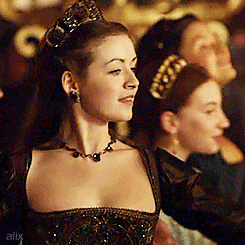



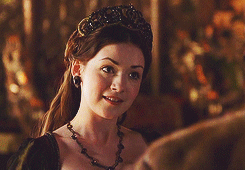
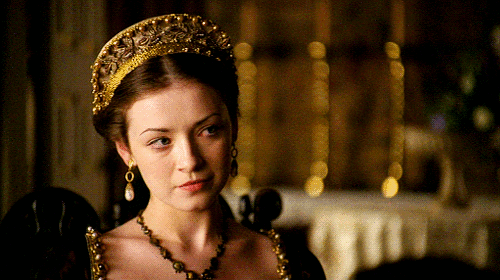
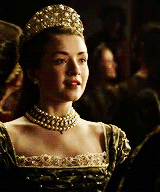
Though her father Henry VIII still wanted a son to rule England, in the 1520s Mary Tudor was his only legitimate heir. Her mother Katherine of Aragon thought women could rule just as well as men—after all, Katherine’s own mother had ruled as queen of Castile. Katherine decided that Mary needed an education that went beyond the role of women as wives and mothers if, as it happened, she ruled England someday. Katherine did not teach Mary how to read and write herself. Like other princesses, Mary had male tutors. Her mother was very involved in the planning of her education, however. Katherine asked Spanish humanist Juan Luis Vives to write a manual for the education of the future queen. In Katherine’s opinion, his original version encouraged girls to be educated only so that they could raise children and be intelligent companions to their husbands. To be fair to Vives, no one in sixteenth century England knew what sort of education to recommend for a female ruler since the country never had one. When Mary was seven years old, Vives wrote a more specific guide called On a Plan of Study for Children, which he dedicated to the princess. It emphasized how to pronounce Greek and Latin and recommended books by authors such as Thomas More, Erasmus, and Plato’s dialogues “particularly those which demonstrate the government of the commonwealth.” Mary was not allowed to read romances since, according to sixteenth century educators, they gave young girls immoral thoughts. Mary’s intelligence was evident in her ability to learn new languages quickly. By age nine, she could write a letter in Latin. She also learned Greek, French, some Italian, and could understand Spanish. Although Mary’s lessons might sound dull to today’s students, she also had opportunities to enjoy herself by playing music—something she excelled at and loved since she was a toddler. The Italian Mario Savagnano met Mary as a teenager and said that in addition to her knowledge of languages “she sings excellently and plays on several musical instruments, so that she combines every accomplishment.” Dancing and hunting were other favorite pastimes. Like all Englishmen and woman, Mary was instructed by her mother to serve God. Young Mary was taught to attend mass several times a day and prayed regularly. At the time, her countrymen were all participating in the same religious rituals. Once Catholicism became unpopular with her father and others, however, Mary, like her mother, would remain Catholic. When she ruled Mary would seek to bring the country back to the Catholic Church and get rid of other religions.
213 notes
·
View notes
Photo

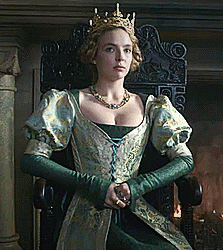

Elizabeth of York in her emerald gown, in The White Princess series.
#elizabeth of york#Queen Elizabeth of York#tudorqueens#the white princess#Tudor Dynasty#Tudor History
227 notes
·
View notes
Photo
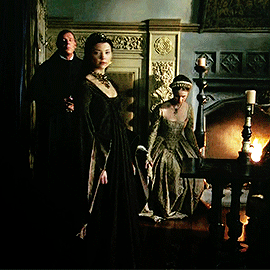

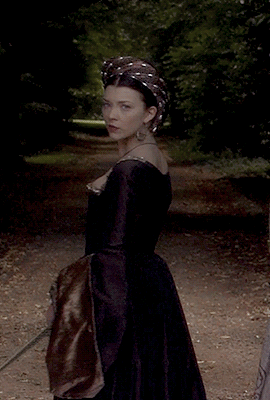


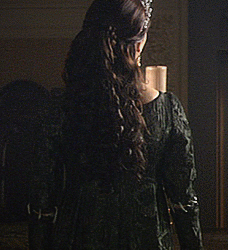
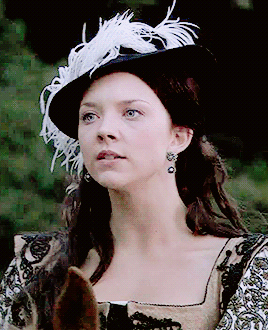
Anne Boleyn in dark clothes in the series The Tudors.
98 notes
·
View notes
Photo
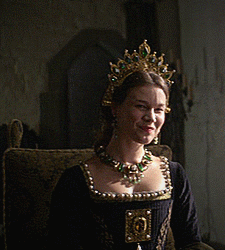
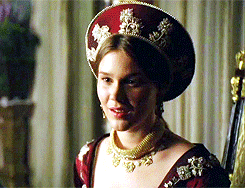

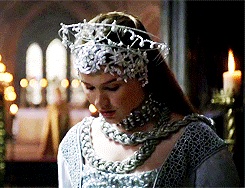
Examples of Anne of Cleves´ style of clothes.
88 notes
·
View notes
Photo

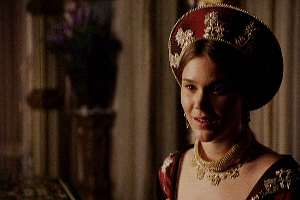
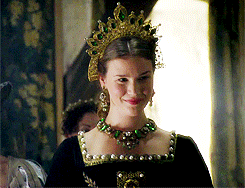
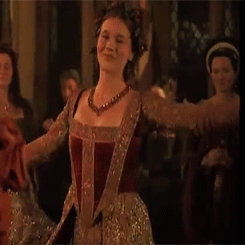
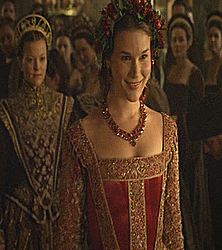
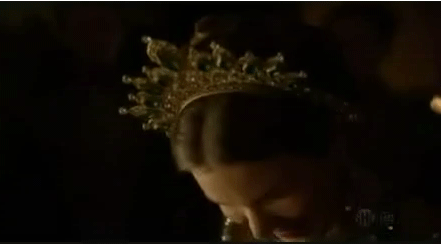
The assumption is that Anne of Cleves grew up in a backward German duchy, too awkward and ignorant to impress a monarch who’d once moved a kingdom for the sophisticated charms of Anne Boleyn. But her father, Duke John, was a patron of Erasmus, the Dutch Renaissance scholar. The Cleves court was liberal and fair, with low taxes for its citizens. And the duke made great efforts to steer a calm course through the religious uproar engulfing Germany in the 1520s and 1530s, earning the name John the Peaceful. He died in 1538, so his must have been the greatest influence on Anne, rather than her more bellicose brother, William. In Germany, highborn ladies were not expected to sing or play musical instruments, but Anne would have been exposed to the moderate, thoughtful political ideals espoused by William the Peaceful. Her mother, Princess Maria of Julich-Berg, had traditional religious values and brought up her daughters as Catholics, no matter what Martin Luther said. Their brother, Duke William, was an avowed Protestant, and the family seems to have moved in that direction when he succeeded to his father’s title.Anne was accommodating when it came to religion. She did not hesitate to follow the lead of her husband Henry VIII, who was head of the Church of England. But in 1553, when her step-daughter Mary took the throne, she asked that Anne become a Catholic. Anne agreed. When she was dying, she requested that she have “the suffrages of the holy church according to the Catholic faith.” The question of Anne’s appearance continues to baffle modern minds. In portraits she looks attractive, certainly prettier than Jane Seymour. A French ambassador who saw her in Cleves said she was “of middling beauty and of very assured and resolute countenance.”It is still unclear how hard Thomas Cromwell pushed for this marriage, but certainly he was not stupid enough to trick his volatile king into wedding someone hideous. The famous Hans Holbein was told to paint truthful portraits of Anne and her sister Amelia. After looking at them, Henry VIII chose Anne. Later the king blamed people for overpraising her beauty but he did not blame or punish Holbein. The portrait captures her true appearance. While we don’t find her repulsive, Henry did.5.) Henry VIII never called her a “Flanders Mare.” The English king’s attitude toward his fourth wife was very unusual for a 16th century monarch. Royal marriages sealed diplomatic alliances, and queens were expected to be pious and gracious, not sexy.Henry wanted more than anything to send Anne home and not marry her, which would have devastated the young woman. He was only prevented from such cruelty by the (temporary) need for this foreign alliance. But while he fumed to his councilors and friends, he did not publicly ridicule her appearance. The report that Henry VIII cried loudly that she was a “. Of all the queens of Henry VIII, Anne of Cleves was the only one to be buried in Westminster Abbey, interred in the same structure as Edward the Confessor and most of the Plantagenet, Tudor and Stuart rulers. In her will she remembered all of her servants, and bequeathed her best jewels to the stepdaughters she loved, Mary and Elizabeth.
101 notes
·
View notes
Photo
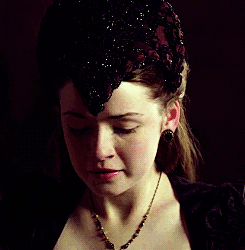
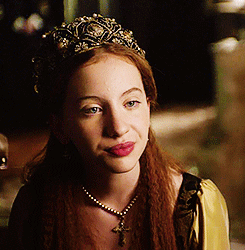

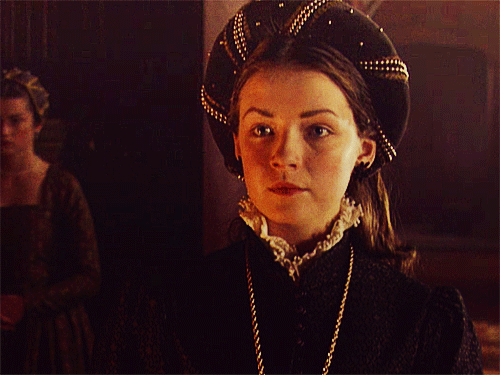
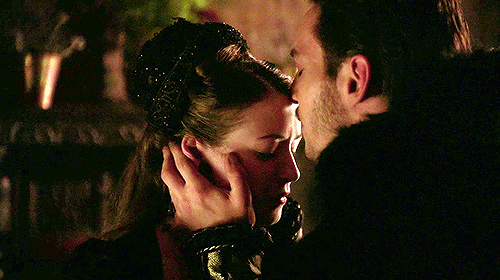
Some of the variations of a French Hood in The Tudors.
87 notes
·
View notes
Photo
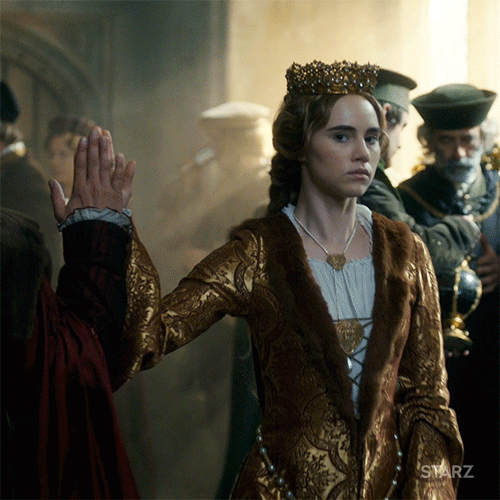

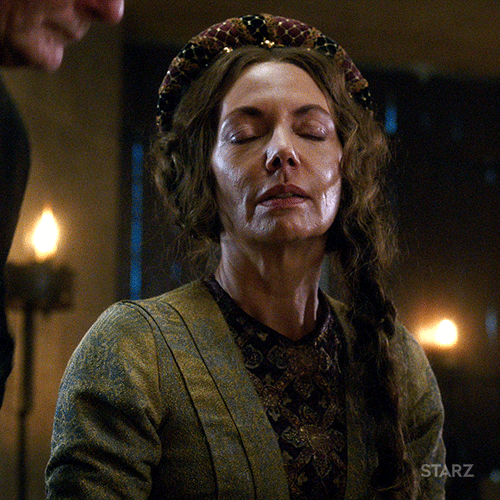
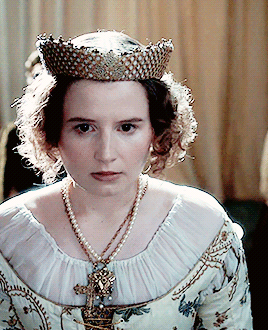

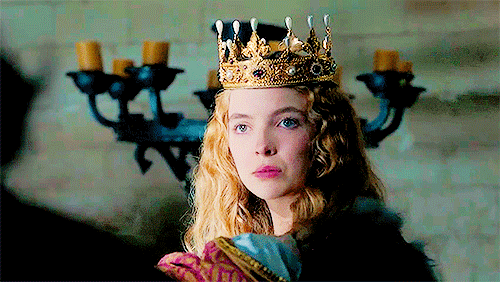

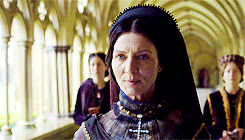
A selection of The White Princess headpieces and hoods, of early Tudor Era.
94 notes
·
View notes
Photo
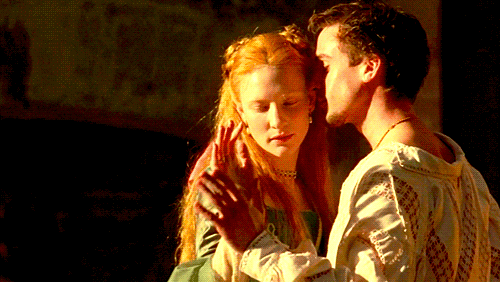
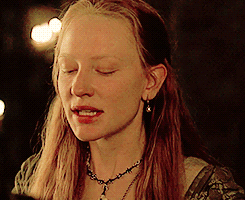

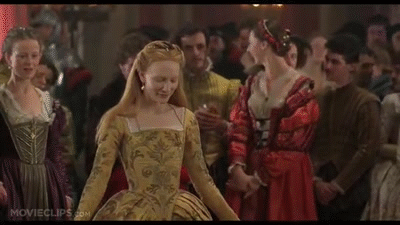
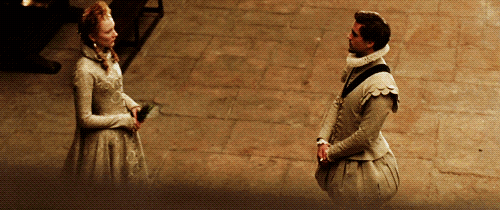
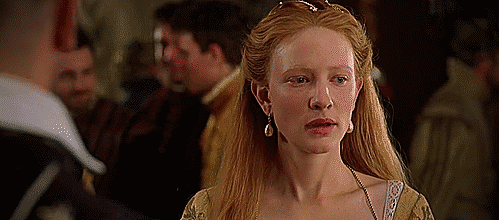


Elizabeth had an erect posture and very pale skin, which people said practically glowed. Her aquiline nose and reddish-gold hair reminded everyone of her father, Henry VIII, fondly remembered as a strong and decisive leader of the nation. She had extremely long, slender hands and fingers. Her eye-color is not definitively known, but from portraits they appear to have been brown, or golden-brown. In old age, her voice was reported as high and shrill. Elizabeth was also an expert horsewoman, who loved to ride her horse at a gallop, frightening everyone (including Master of the Horse Robert Dudley) with her equestrian antics. She mastered the art of appearing stately and regal when it mattered, but in private, she moved and walked quickly. Her obsession with dancing was famous, and she enjoyed watching dancers as much as she liked to dance herself. She loved fine clothing and jewelry, and her attire was the height of glamour and fashion in the period.
209 notes
·
View notes
